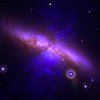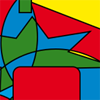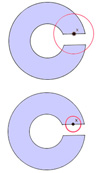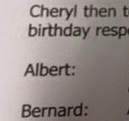| Image of the week |
|
On our blog we periodically feature a favourite mathematical image. From fractal elephants to beautiful snow art, find out what pictures have brought joy to our mathematical hearts!
Image of the week
|
| Information about information |
|
We live in a golden age of information. Never has so much of it been available so easily to so many of us. Information is power, it's money and, given how much of our life is lived online, defines part of our reality.
But what exactly is information? That's the subject of a project we're currently running in collaboration with FQXi. To see what we have so far found out about information, follow this link:
Information about information
|
|
|

Slow down, Universe
A new study suggests that the Universe's expansion might not be speeding up as quickly as people thought.
Find the gap
There's been progress on one of the biggest open problems in maths: the twin prime conjecture.
|
READ MORE
|

The future of proof
Will computers ever replace human mathematicians and will maths become crowd-sourced?
Why we want proof
What are mathematical proofs and why are mathematicians so crazy about them?
Sexual statistics
David Spiegelhalter's new book Sex by numbers takes a statistical peek into the nation's bedrooms. In this interview (in article and video format) he tells us some of his favourite stories from the book. You can also listen to the interview as a podcast.
|
READ MORE
|
|
Maths in a minute: Local connectivity
|
|

We know that there are shapes in the plane whose outline is incredibly crinkly. Examples are fractals, like the famous Mandelbrot set. But just how crinkly can a shape be?
One concept that captures some of a shape's crinkliness is local connectivity, or rather a lack of it. To understand local connectivity, first think of a comparatively simple shape, like the one in the picture (call it S). Pick a point x that's part of S — for illustration we'll pick one that lies on its outline. Now draw a little disc V with x at its centre and look at the intersection of V and S.
As you can see in the picture, it may happen that the intersection consists of more than one connected component. In our example this happens because the outline of S curves around and re-enters the disc V again at a place away from x. However, that's only because we chose V to be quite large. By making V smaller we can ensure that the intersection of S and V consists of only one connected component.
A shape S (drawn in the plane) is locally connected at x if the intersection of a disc V, centred at x, and S consists of a single connected component as long as the radius of the disc is sufficiently small. A shape S is locally connected if it's locally connected at all its points. All the obvious shapes you can think of — circles, squares, triangles and the one above — are locally connected. If a shape is not locally connected at a point x, then bits of S that are some distance away from x (when you're travelling inside S) bend around and come arbitrarily close to x, making the outline of the shape very crinkly.
So is our favourite fractal, the Mandelbrot set, locally connected? The answer is that we don't know. Mathematicians believe that it is, and they have been able to show that it is locally connected at many of its points — but they haven't been able to prove that it's locally connected at all of them.
|
|
|
Browse with Plus: The Cheryl problem
|
|

This week a maths problem set the internet ablaze. Coming from a Singapore maths olympiad, it involves working out the birth date of a girl called Cheryl using a list of possible dates and the state of knowledge of her mates Albert and Bernard. If you haven't come across the puzzle then we recommend you try it — it's in Alex Bellos's column in the Guardian. You don't need to know any maths, only your brain! (And yes, there's a link to the solution too!)
|
|
If you have any comments on this newsletter, or Plus Magazine, please contact us at [log in to unmask] - we are always happy to hear from our readers!
Feel free to forward this email to anyone you think might be interested.
Happy reading!
|
